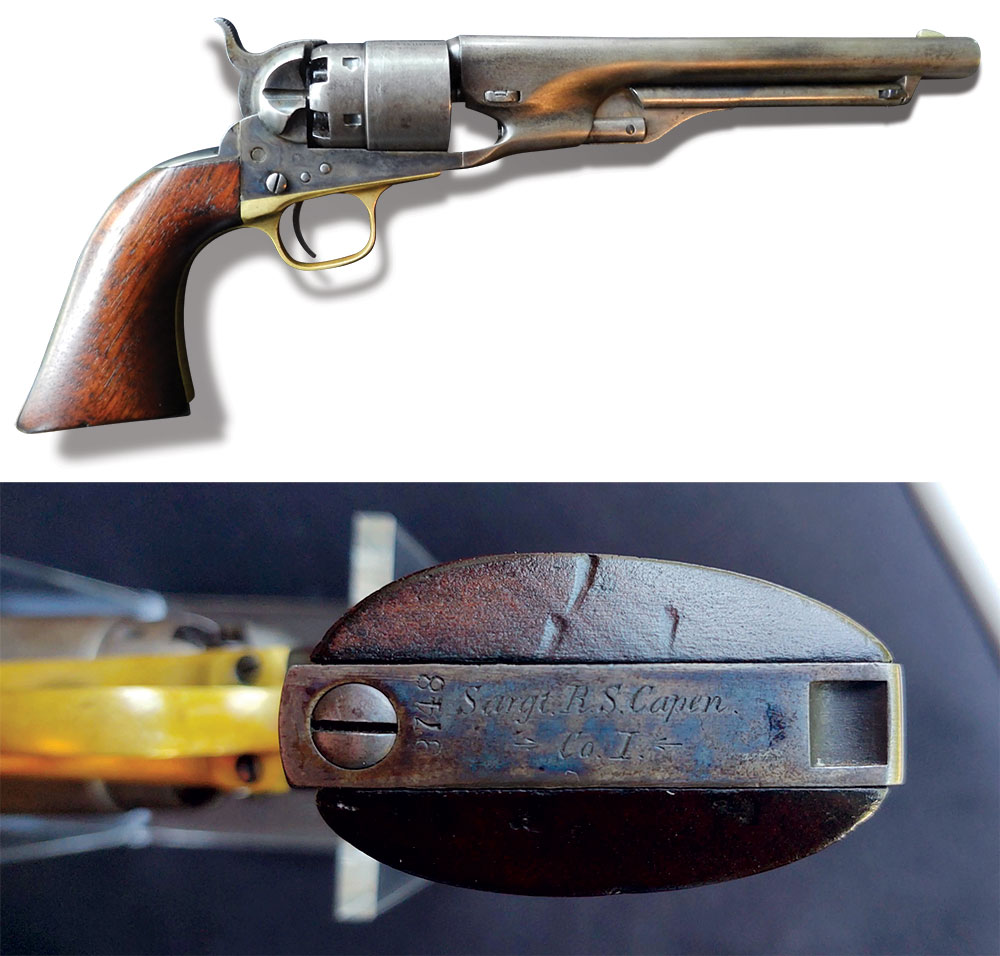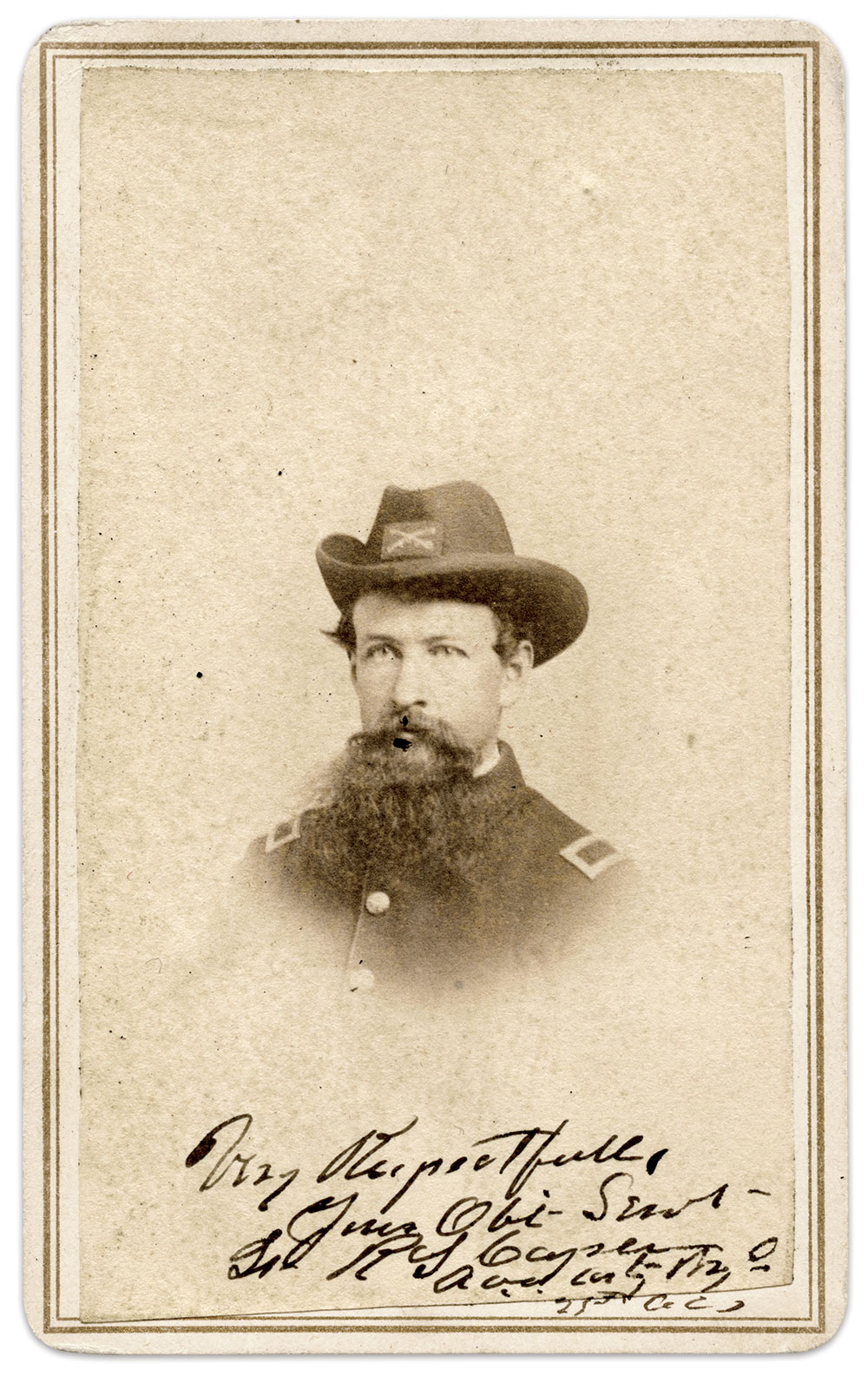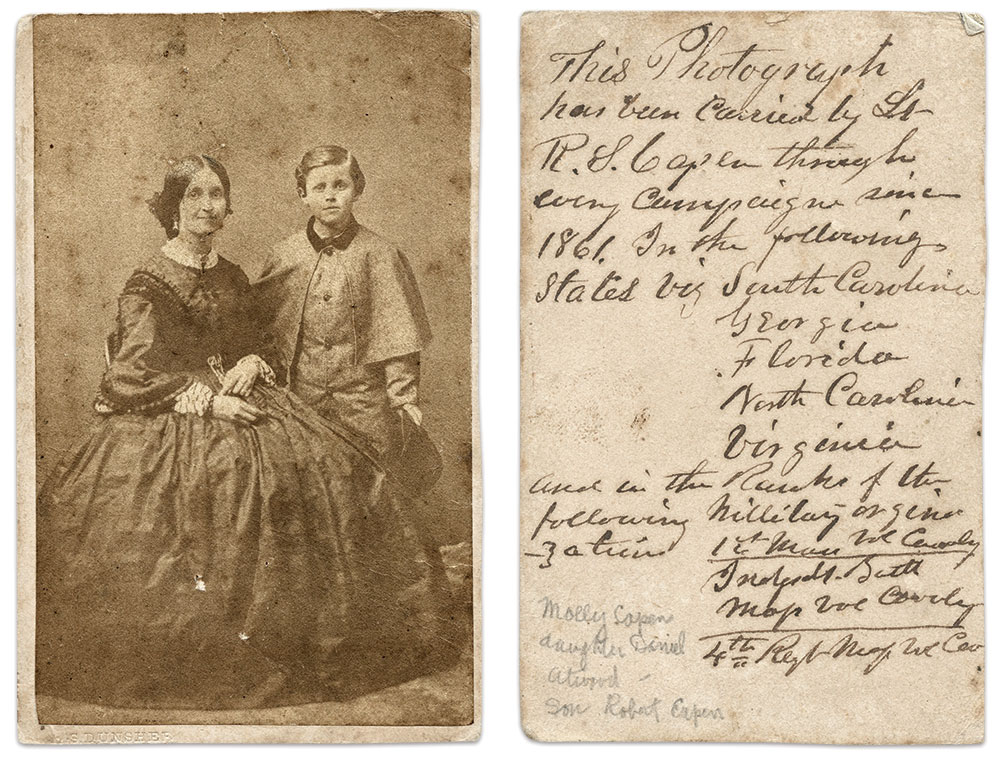By Bill Thompson, with artifacts from the author’s collection
Samuel Colt sold more Model 1860 Army revolvers to the government than any other gunmaker’s revolvers during the Civil War. About 133,000 of these handguns were issued to enlisted cavalrymen (officers had to buy their own sidearms).
The revolver issued to Sgt. Robert S. Capen is stamped with serial number 23748, which dates it to 1861. All of the serial numbers on the gun match, except for the wedge.
Capen’s Colt has all the hallmarks from this period. They include a cut-out for an attachment of a stock extension, and “four screws” in the lockplate (this is the term used by collectors, even though there are actually five screws, two for the stock extension to rest on).

This .44 caliber, 6 shot revolver with an 8-inch barrel shows clear evidence of its passing the rigid government inspection. The cartouche of John Taylor, a civilian government inspector, is visible on the left side of the grip. Assigned to Colt as a principal sub-inspector of government purchased guns on Aug. 17, 1861, John Taylor proved himself a very capable employee.
Taylor was one of many army-assigned civilian and military inspectors to the factory in Hartford, Conn., to certify and test each gun prior to acceptance. According to Charles W. Pate, in his book, The Colt Model 1860 Army Revolver, there was a rigid 10 percent rejection rate.
Capen must have been proud to receive his gun, probably in the first quarter of 1862, as he had “Sargt. R.S. Capen Co. I” inscribed on the butt plate.
Born in the Old Colony, Plymouth, Mass., in 1830, Capen was raised by his parents, Robert and Mary. His father, a doctor, supported the new and controversial practice of homeopathic medicine, which continues to receive criticism.
Capen did not follow in his father’s professional footsteps, becoming a merchant instead. In September 1861, at age 32, he mustered into Company I of the 1st Massachusetts Cavalry. Ordered to South Carolina, the regiment arrived in early 1862. In the middle of the year, eight companies were sent to Virginia. Capen’s company and three others stayed in the Palmetto State and came to be called the Independent Battalion of Massachusetts Cavalry. They participated in the assault on Fort Wagner, and, in Florida, the Battle of Olustee and capture of Jacksonville.

In early 1864, Capen re-enlisted. About this time the battalion joined the new 4th Massachusetts Cavalry, moved to Virginia, and joined in operations against Petersburg and Richmond. In August 1864, the 4th became part of the Army of the James and Capen received a promotion to second lieutenant.
In October 1864, following the Battle of Chaffin’s Farm, Capen was detached to serve as Acting Ordnance Officer for the Light Artillery Brigade of the 10th Corps and continued to serve on this assignment after a reorganization that transferred him to the 25th Corps.

Meanwhile, the 4th fought and suffered heavy losses at the Battle of High Bridge near Farmville, Va., on April 6, 1865. Soon after, Capen returned to the regiment’s depleted ranks and received his discharge at Richmond in November 1865.
After the war, Capen is listed variously as a merchant and manufacturer. He died in New York City in 1890 at age 60. Mary never remarried and died in 1919. Son Robert preceded her in death in 1917.
Bill Thompson is a longtime Civil War relics collector dedicated to preserving history. His recent interest in owning a relic identified with a particular soldier resulted in bringing together Capen’s Colt and these portraits, which were in different collections. “A big part of owning identified items from the Civil War is the pleasure of recombining a soldier’s life history with the item he carried. Doing this requires hours upon hours of research, often with nothing much to show for the effort. But the excitement of recovering some key facts, and in this case, two original images, makes up for the many hours spent.” Bill lives in Virginia, where he is a member of the Central Virginia Civil War Collector’s Association.
SPREAD THE WORD: We encourage you to share this story on social media and elsewhere to educate and raise awareness. If you wish to use any image on this page for another purpose, please request permission.
LEARN MORE about Military Images, America’s only magazine dedicated to showcasing, interpreting and preserving Civil War portrait photography.
VISIT OUR STORE to subscribe, renew a subscription, and more.

